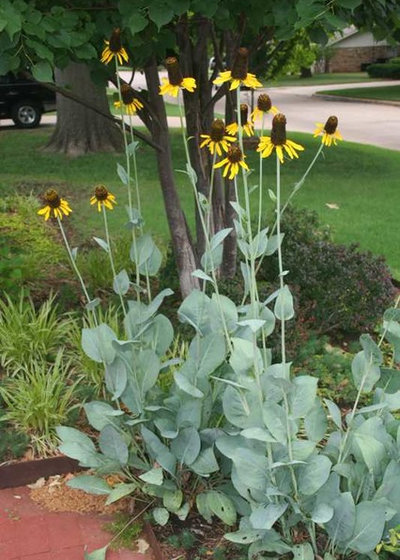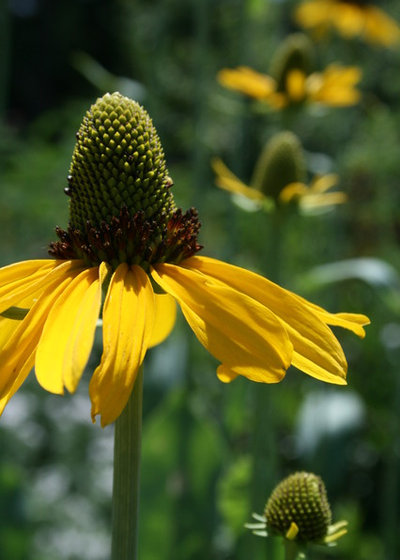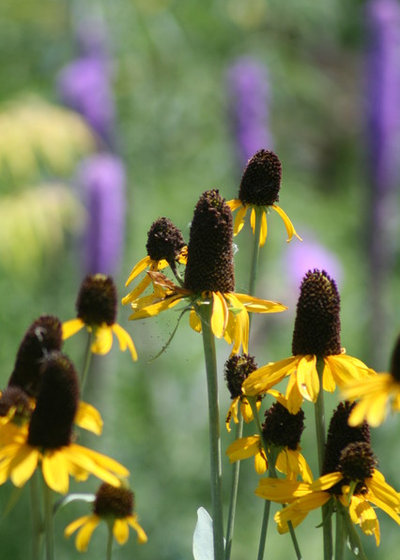Yeah, yeah, yeah, there's regular old biennial Rudbeckia that's 2 feet tall and for sale in any nursery, but then there's the long-living giant coneflower. If you want to be the talk of your gardening friends, give the latter a place to accent your border or meadow.

Missouri Botanical Garden
Botanical name: Rudbeckia maximaCommon names: Giant coneflower, tall coneflower
Origin: Native to the southern Great Plains — Oklahoma, Texas, Arkansas and Louisiana
Where it will grow: Hardy to -30 degrees (USDA climate zones 4 to 8); find your zone
Water and soil requirements: Medium to moist clay and loam
Light requirement: Full to partial sun
Mature size: 6 feet tall and 3 feet wide, with very strong stems
Benefits and tolerances: Easy perennial; attracts pollinating insects and butterflies; takes some brief drought
Seasonal interest: Good four-week or more bloom period in midsummer; unique big blue leaves; winter interest
When to plant: Spring to fall

Benjamin Vogt / Monarch Gardens
Distinguishing traits. In spring the basal foliage of large powdery-blue leaves begins to rise out of the center, giving way to many June and July stalks that can take most any windstorm. Yellow flowers bloom for weeks and provide wonderful winter interest.

Benjamin Vogt / Monarch Gardens
How to use it. A stunner out in the middle of a meadow or at the center of a border, giant coneflower is a true exclamation point. Its leaves also cup water that birds and insects drink from, making it a good pit stop for wildlife. Goldfinches may eat the winter seeds, while the foliage in warmer zones can be green in winter.
Planting notes. Giant coneflower does best with consistent moisture but can handle some periodic drought. It's not affected by diseases or pests, and can be dug in at any time of year. It's carefree and unique — so do you have one yet?
What to Do in Your Garden Now | More flowers to attract birds, bees and butterflies





